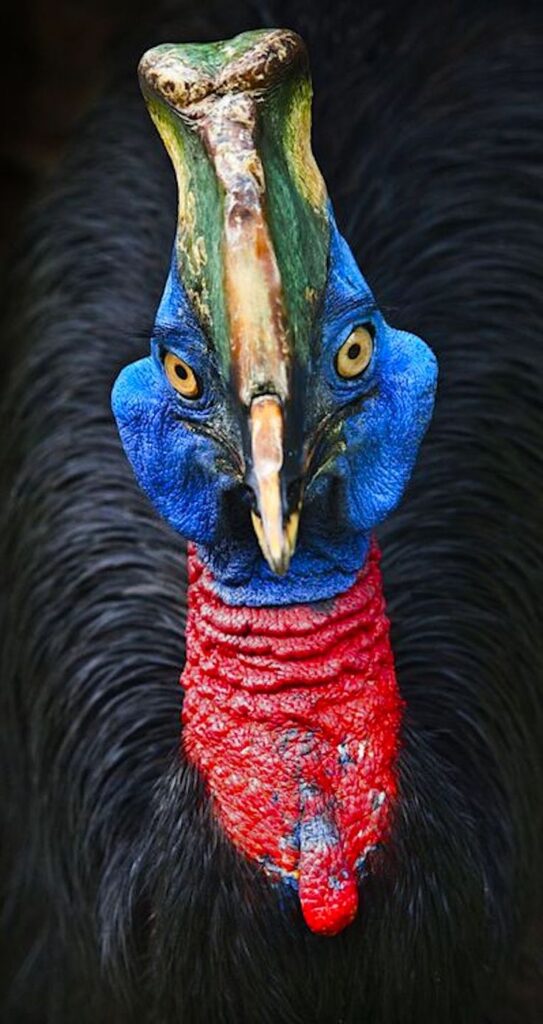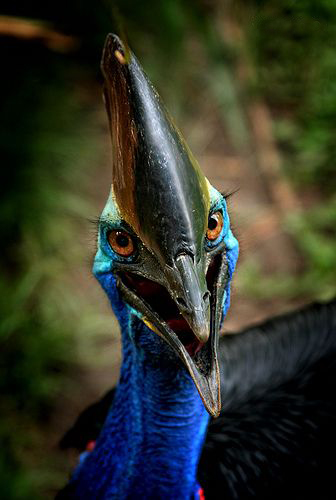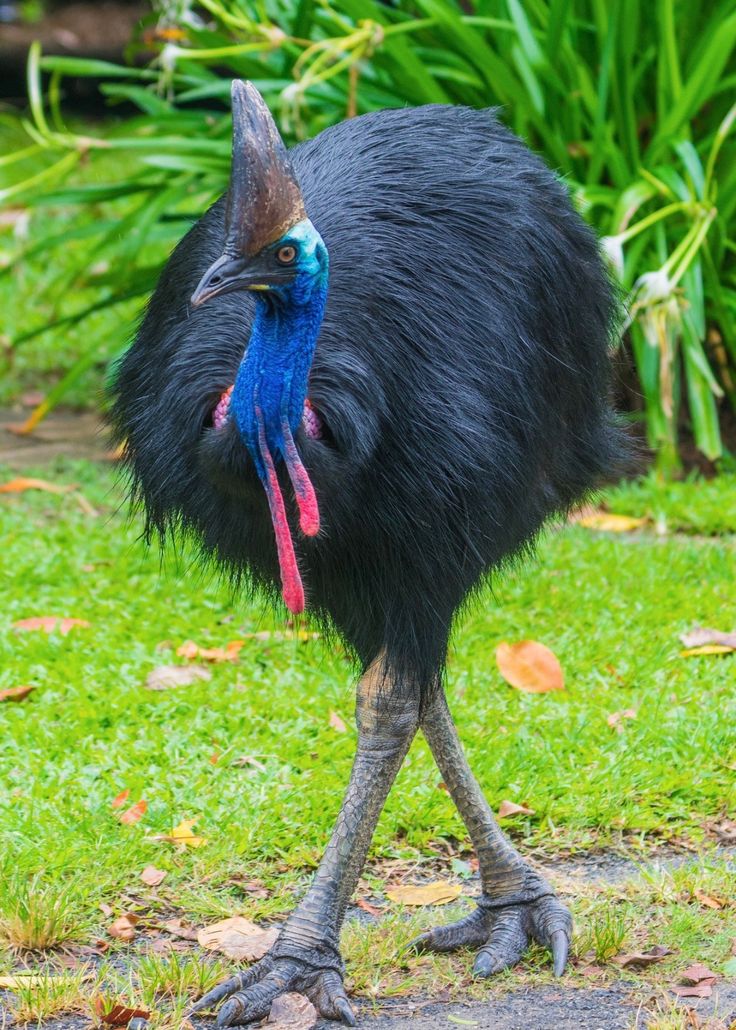
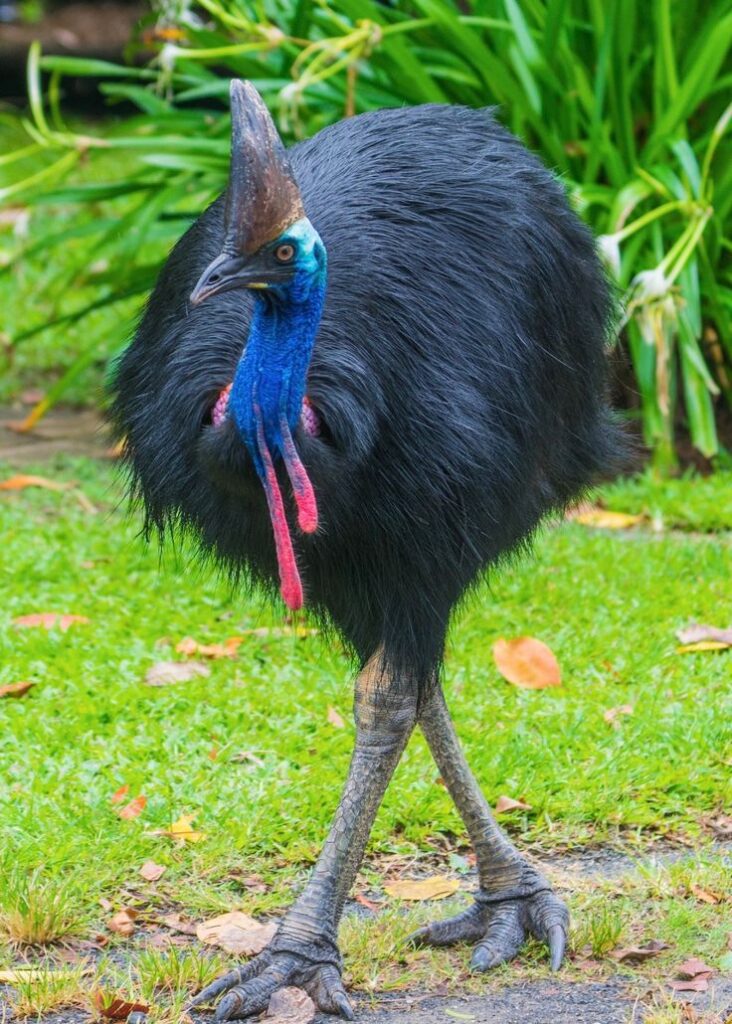
The cassowary, often dubbed the “world’s most dangerous bird,” is a striking and unique flightless bird native to the tropical forests of New Guinea, nearby islands, and northern Australia. With its vibrant colors, impressive size, and peculiar features, the cassowary has captivated the interest of ornithologists and wildlife enthusiasts alike.
Physical Characteristics
Cassowaries are large birds, standing up to 6 feet tall and weighing between 60 to 130 pounds. They are recognized by their striking blue skin, vibrant yellow wattles hanging from their necks, and a distinctive helmet-like casque atop their heads. This casque, made of keratin, is thought to play a role in communication and may help the bird navigate through dense forest undergrowth.
Their long, powerful legs are equipped with sharp claws, with the middle toe sporting a dagger-like claw that can measure up to 5 inches long. While cassowaries are not aggressive by nature, they can be dangerous when threatened, using their powerful legs to kick and defend themselves.
Habitat and Diet
Cassowaries inhabit dense rainforests, swampy areas, and tropical forests, where they play a crucial ecological role as seed dispersers. Their diet primarily consists of fruits, seeds, fungi, and small invertebrates. By consuming various fruits and later excreting the seeds, cassowaries contribute to the growth of diverse plant species in their habitats, making them vital for maintaining forest health.
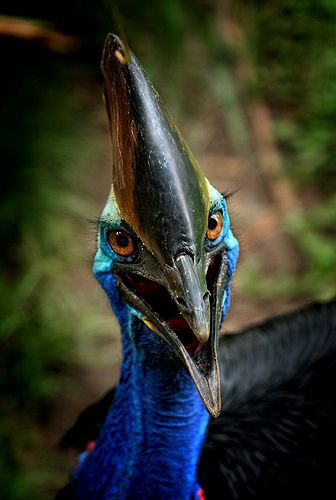
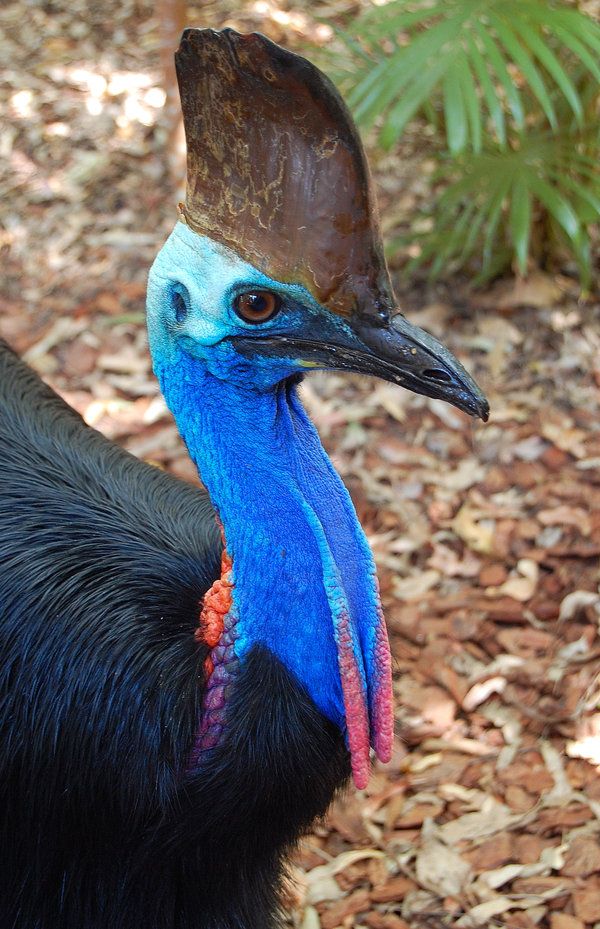
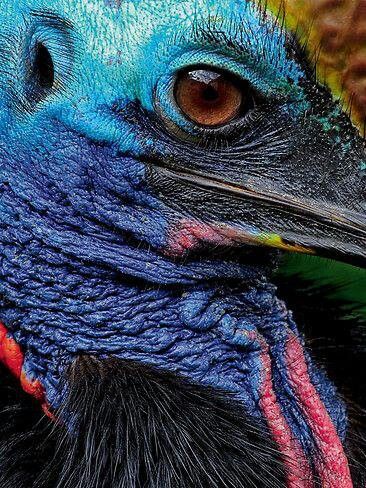
Behavior and Breeding
Cassowaries are solitary birds, known for their elusive nature. They are most active during the early morning and late afternoon, often wandering in search of food. Males are responsible for incubating the eggs, which usually number between three to five. The male cassowary will sit on the eggs for about 50 days, after which he will care for the chicks for several months, teaching them to find food and navigate their environment.
Conservation Status
Despite their unique role in the ecosystem, cassowaries face several threats, including habitat destruction due to logging and agriculture, vehicle collisions, and predation from introduced species like dogs. The International Union for Conservation of Nature (IUCN) lists the cassowary as a vulnerable species, emphasizing the need for conservation efforts to protect their natural habitats and ensure their survival.
Conclusion
The cassowary is not just a fascinating bird but also an essential component of its ecosystem. Its striking appearance, unique behaviors, and critical role as a seed disperser highlight the importance of preserving this remarkable species and its rainforest habitat. Conservation efforts aimed at protecting cassowaries will not only benefit these magnificent birds but also contribute to the health and diversity of the ecosystems they inhabit.

